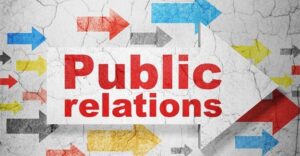Technology communications is a fast-paced industry. Professionals must stay ahead of the game. Tools and strategies evolve as the industry does. Artificial intelligence (AI) is a significant recent development. It transforms customer interactions, reputation management, and data analysis. AI is revolutionizing technology communications, from chatbots to data analytics. It’s like something out of science fiction.
Chatbots and virtual assistants
One of the most visible applications of AI communications is the use of chatbots and virtual assistants. These intelligent programs can simulate human conversations and provide real-time support to customers. Chatbots are now commonly used on websites and social media platforms to answer frequently asked questions, provide product information, and guide customers through the sales process. They offer a seamless and efficient way for companies to engage with their audience and provide instant assistance, even outside of regular business hours.
Data analytics and insights
AI-powered data analytics tools are transforming how technology companies interpret and leverage data. AI can process vast amounts of information in real time, helping companies gain valuable insights into customer behavior, preferences, and trends. This data-driven approach enables companies to make informed decisions, identify opportunities, and optimize their marketing and communication strategies. With AI communications professionals can now analyze data faster and more accurately than ever before, leading to more effective and targeted campaigns.
Personalization and targeting
AI has opened up new avenues for personalization and targeted marketing in technology communications. By analyzing user data and behavior, AI algorithms can deliver tailored content to individual customers, making communications more relevant and engaging. Personalized marketing campaigns can increase customer loyalty and satisfaction, as consumers feel valued and understood by the brand. Moreover, AI-driven targeting allows technology companies to reach the right audience with the right message at the right time, maximizing the impact of their communications efforts.
Sentiment analysis and reputation management
AI-driven sentiment analysis tools are invaluable for technology companies seeking to monitor their brand reputation and public perception. These AI communication tools can scan online discussions, social media posts, and news articles to gauge the sentiment surrounding a brand or product. By analyzing vast amounts of text data, AI can identify positive or negative sentiment trends in real time. This information allows communications professionals to proactively address potential issues, manage crises effectively, and make data-backed decisions to enhance the brand’s reputation.
Predictive analytics
Predictive analytics is another powerful application of AI communications. By analyzing historical data and patterns, AI algorithms can make predictions about future trends, customer behavior, and market changes. This capability empowers technology companies to anticipate customer needs, optimize their communications strategies, and stay ahead of the competition. Predictive analytics also allows communications professionals to identify potential challenges and opportunities, enabling them to make proactive decisions to drive business growth.
Voice search optimization
As voice-activated virtual assistants like Siri and Alexa become increasingly popular, technology companies must optimize their content for voice searches. AI-powered voice recognition technology is continually improving, and companies must adapt their SEO and content strategies accordingly. By leveraging AI-driven insights and data analytics, technology communications professionals can identify the most common voice search queries and create content that aligns with the preferences of voice-activated virtual assistants.
Real-time language translation
In a globalized world, technology companies often communicate with audiences from diverse linguistic backgrounds. AI-powered real-time language translation tools break down language barriers and enable seamless communication with international customers and partners. These AI communication tools facilitate effective cross-cultural communications, allowing technology companies to engage with a broader audience and expand their global presence.




